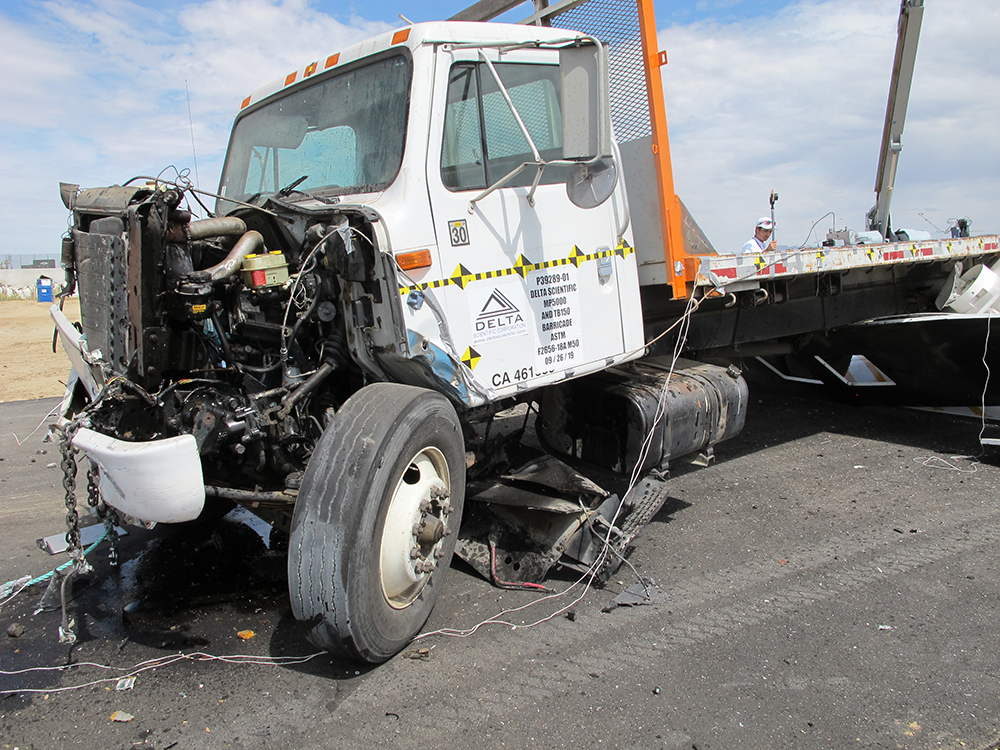Understanding Barrier Crash Ratings

Delta Scientific’s high-security barricades meet or exceed standards for the industry as evidenced by our crash ratings. However, unless you understand what the ratings mean, you cannot really appreciate how effective our barriers are. For this reason, we feel that it may be helpful to explain the crash ratings behind our products and what they mean.
Delta Scientific high-security products are rated according to two different measures: the K-rating and the M-rating. While there are some differences between the two, they each take the same three factors into consideration when determining the effectiveness of the barrier:
- The vehicle’s speed
- The vehicle’s weight
- The distance the vehicle travels past the barrier upon stopping
M-Rating
The M-rating is the newer rating, having been developed by the American Society for Testing and Materials in 2009. Because the ASTM is a civilian organization, it gives crash ratings to barriers based on different sizes of vehicle. Delta Scientific barriers receive M-ratings based on how effective they are at stopping a medium-duty truck, i.e., one weighing up to 15,000 pounds.
The M-rating includes a number that reflects the maximum velocity at which the barrier can stop a 15,000-pound truck. Thus, an M50-rated barrier can stop a medium-duty truck traveling 50 miles an hour, an M40 barrier is effective at 40 miles per hour, and a M30 barrier can stop a 15,000-pound truck traveling 30 miles per hour.
The ASTM scale also includes a penetration rating. This rating reflects how far the chassis of the truck extends past the barricade upon stopping. Penetration ratings consist of the letter P and a number from one to four. The lower the number, the less penetration the vehicle showed. P1 is the rating for the least penetration, given when the truck body travels no more than 3.3 feet. A barrier that allows the truck body to travel more than 98.4 feet is given a P4 rating.
K-Rating
The K-rating is older than the M-rating, having first been developed in 1985 and revised in 2003. While the M-rating was developed by a civilian organization, the K-rating was developed by the Department of Defense for evaluating military-grade security products.
Like the M-rating, the K-rating bases its certifications on the ability of the barricade to stop a medium-duty truck weighing up to 15,000 pounds:
- A K12 barrier can stop a truck traveling 50 miles per hour
- A K8 barrier can stop a truck traveling 40 miles per hour
- A K4 barrier can stop a truck traveling 30 miles per hour
K12 is the highest K-rating and is roughly equivalent to an M50 rating on the ASTM scale.
Like the ASTM scale, the Department of Defense scale also gives penetration ratings based on how far the front bumper travels after stopping. These are delineated with the letter L, and in this case, a higher number indicates less penetration. Therefore, an L3-rated barrier has penetration of less than three feet, while an L1 barrier allows penetration between 20 and 50 feet. A barrier that allows the bumper to travel more than 50 feet does not receive a certification for penetration according to the DoD scale.
Understanding crash ratings for barricades helps you appreciate how effective a security product is. You’ll find that many of Delta Scientific’s barricades and bollards have the highest possible crash ratings.
Sources:
https://www.usace.army.mil/portals/2/docs/protection/dod_anti-ram_vehicle_barriers_january_20141.pdf
https://www.wbdg.org/resources/bollard-crash-and-attack-resistant-models
Share This Story, Choose Your Platform!
